- Home
- Roald Dahl
D is for Dahl Page 6
D is for Dahl Read online
Page 6
A. Which bits of Roald were removed by a doctor when he was eight years old?
B. What color is a witch’s spit?
C. What gushed over Willy Wonka’s waterfall?
D. What did Roald once hide in a jar of sweets?
E. Roald once wrote a rather slow-moving love story. Can you guess the title?
F. What is the name of the pale-green fizzy drink that fills the BFG and Sophie with bubbles?
G. Who does George feed his Marvellous Medicine to?
H. What was the Dahl family’s boat called?
I. What did Roald keep in two battered exercise books?
J. Who lived happily ever after in a “stone” house in New York City?
K. What was the name of Roald’s favorite toffee-like Norwegian treat?
L. Which of Roald’s daughters was bullied on the way to school?
M. Which tiny creatures lived in the Forest of Sin?
N. What part of his body did Roald almost lose in a car accident?
O. Who works in Willy Wonka’s factory?
P. What did Roald eat for lunch every day?
Q. The BFG blows a dream into the bedroom of a very famous person. Who?
R. Which little fairy-tale character was this?
The small girl smiles. One eyelid flickers.
She whips a pistol from her knickers.
S. Which aunts were ironed flat by the giant peach?
T. What did Roald often warm for a prefect at Repton?
U. When he worked in London, Roald always made sure that he carried one particular thing with him. What was it?
V. Which are the scariest and most dangerous aliens in the universe (according to Willy Wonka)?
W. What does Mrs. Twit mix into her husband’s spaghetti?
X. What did doctors use to photograph Roald’s insides? (Well, you try to think of another answer that begins with X!)
Y. What was Roald’s favorite color?
Z. Which invention did Roald really admire? (Clue: it was better than buttons.)
Raspberries ~ Roald Dahl grew these luscious fruits when he was very young. He loved them, in a dribbly, sticky way. In Norway, his aunts used to sit with a big bowl of yellow “mutter” raspberries and a needle to hook out the maggots lurking inside.
Readathon® ~ Since 1984, Readathon® has raised millions of pounds for children’s charities in the UK. Roald Dahl thought the sponsored reading event, created by Brough Girling, was a fantastic idea and became the Readathon® patron in 1988. Not only do children get to read their favorite books, but they get paid for doing it and this money helps others—all at the same time!
R is for Reading
Reading ~ Roald Dahl thought that reading was ESSENTIAL! Without it, you can’t do anything in life. He didn’t judge people on what they liked to read, as long as they read something.
Real people ~ Roald Dahl often based his characters on people he knew but concealed their identity by making up new names—his inspiration for this was the telephone directory.
Red-Hot Smoke-Belching Gruncher ~ This is the name of the terrible beast from The Minpins. It’s very, very scary.
Revolting Rhymes ~ They’re repulsive, they’re rude, and they’re really really revolting. They’re also highly recommended. If you haven’t read them, buy a copy without delay! Roald Dahl made these up in the bath and that’s a good place to read them.
Rhyme Stew ~ Roald Dahl loved tinkering with fairy tales and nursery rhymes when he was between books, waiting for the next big idea to come along. Rhyme Stew was the result, and although this collection of rhymes was written for adults, many older children dip into it, too. It’s full of snappy rhymes to get your teeth into—and some even bite back! This snippet is from “The Dentist and the Crocodile.”
R is for Roald Dahl Club
He opened wide his massive jaws.
It was a fearsome sight—
At least three hundred pointed teeth, all sharp and shining white.
The dentist kept himself well clear.
He stood two yards away.
He chose the longest probe he had to search out the decay.
The Roald Dahl Children’s Gallery ~ This is part of the Buckinghamshire County Museum. You can go inside James’s giant peach to see the insect collection or ride in Willy Wonka’s Great Glass Elevator to find out about space flight. You can travel by television like Mike Teavee in Charlie and the Chocolate Factory, too, and discover how your TV works. This totally brilliant interactive museum is the only one of its kind in the world! Check out the website at www.buckscc.gov.uk/museum/dahl
Roald Dahl Club ~ Did you know you could join the Roald Dahl Club? You do now. Log on to www.roalddahl.com right away!
Doing wonkalicious things
Providing practical support for children with
brain, blood, and literacy problems
What is the Roald Dahl Foundation?
As well as being a great storyteller, Roald Dahl was also a man who gave generously of his time and money to help people in need, especially children. After he died in 1990, his widow, Felicity, set up the Roald Dahl Foundation to continue this generous tradition. Its support spreads far and wide. Since it began, the Foundation has given over £4 million across the UK.
The Foundation aims to help children and young people in practical ways and in three areas that were particularly important to Roald during his lifetime: neurology, hematology, and literacy. It makes grants to hospitals and charities, as well as to individual children and their families.
Supporting the Roald Dahl Foundation
Funded partly through its original endowment, the Foundation also benefits from a range of fund-raising, most notably the national sponsored reading event Readathon®. In addition, it is proud of the Friends of the Roald Dahl Foundation, who arrange a program of local events, the many schoolchildren who fund-raise on its behalf, and the Payroll Giving supporters. Finally, it is able to benefit from an ambitious program of new orchestral music for children based on Roald’s stories and rhymes, specially commissioned on its behalf.
To find out more about the Roald Dahl Foundation, visit the website at www.roalddahlfoundation.org
The Roald Dahl Foundation
is a registered charity no. 1004230
“Tremendous Things Are in Store for You!”
Are you one of Roald Dahl’s biggest fans? If you are, then we have got some splendiferous news for you!
As you probably know, Roald lived in Great Missenden, a quiet village in Buckinghamshire where he wrote all of his stories for kids. But did you know that Great Missenden is the most scrumdiddlyumptious place in the world? This is where you’ll find the Roald Dahl Museum and Story Centre.
The Museum and Story Centre tells the eventful tale of Roald’s life, using photographs and film. Interactive displays help you to discover more about his Norwegian family, his school days, his time as a Second World War pilot, and how he became a world-famous writer. It is also jam-packed with stuff about how to write, a replica of Roald’s writing hut, and facts about other brilliant authors. You will even get the chance to make up stories of your own! At the heart of the Museum and Story Centre is an amazing archive full of things that have never been seen before, including the original handwritten drafts of many of Roald’s books, corrected typescripts, fifty years of letters, and a lifetime of family photographs.
For more information on the Roald Dahl Museum and Story Centre, visit www.roalddahlmuseum.org
The Roald Dahl Museum and Story Centre is a registered charity no. 1085853
R is for Roald Dahl’s Revolting Recipes. . .
Roald Dahl’s Revolting Recipes and Roald Dahl’s Even More Revolting Recipes ~ Stuffed with scrumdiddlyumptious instructions, these books show the hungry reader how to prepare recipes such as Liquid Chocolate Mixed by Waterfall (from Charlie and the Chocolate Factory) and Mosquitoes’ Toes and Wampfish Roes Most Delicately Fried (from James and the Giant Peach). Er, mmm. . . urgh!
> Royal Air Force ~ Roald Dahl joined the Royal Air Force in Nairobi, Kenya, in 1939, just after Britain declared war on Germany. He went on his first solo flight after just seven hours and forty minutes of training and went into combat territory with only eight months’ training in all. War brought Roald many hardships and injuries but gave him moments of great happiness, too—for example, flying in his Tiger Moth over the Kenyan Highlands. Later, he flew a Hurricane on many missions and took part in the Battle of Athens in April 1941. You can read all about this in Going Solo.
Sandals ~ When Quentin Blake started his drawings for The BFG, he showed the giant wearing boots, but that didn’t feel quite right. So, Roald Dahl sent him one of his own old Norwegian sandals—and they were perfect.
Satisfaction ~ Roald Dahl was never satisfied with what he wrote, with the exception of Matilda.
“Writing is mainly perspiration, not inspiration.”
—ROALD DAHL
Sausages ~ If you were invited to supper at Roald Dahl’s house, he would probably cook you sausages. Then he would tell you that only he and the queen had those particular sausages.
S is for School
School ~ Roald Dahl was so famous he had a school named after him in the Netherlands. Liccy still receives letters from the Roald Dahl Basics School—and she wears the T-shirt.
School reports ~ Here is one of Roald Dahl’s school reports. In another, his English teacher described Roald as being “quite incapable of marshalling his thoughts on paper.” From these you would never have guessed he’d go on to be a great writer.
S is for Serious science
Secret diaries ~ Roald Dahl believed that there were two kinds of diaries—the secret-thoughts diary and the what-happened-to-me-today diary. His advice to would-be diary-writers was that before writing a single word, it was absolutely essential to find a top-secret hiding place. (He knew that even the nicest mothers would be quite unable to resist reading a diary if they found it.) Roald never revealed what happened to his own diaries. Did he burn them or bury them? (See also Hiding places.)
Secrets ~ Roald Dahl just couldn’t keep them! An example of this was the surprise that he thought up for his wife, Liccy—to buy a puppy. The plan was to fetch the puppy, put him in a basket, and leave it on her bed. But the secret was too hard to keep and he “let the dog out of the basket” and ended up taking Liccy to choose him herself. Who was the puppy? None other than the famous Chopper.
Serious science ~ Roald Dahl loved to put his curious mind to the test by inventing new devices designed to solve the trickiest of problems. When his son was seriously ill, he helped to develop a valve that drained liquid from the brain. Although Theo Dahl recovered without needing the valve, it was used to treat over 2,000 children.
S is for Shaving
Shaving ~ Roald Dahl didn’t like shaving. To make it more fun, he would pretend that he was playing golf and, just as he tried to get from the tee to the hole in only three shots, he tried to shave his chin in three strokes of his razor blade. The alternative to shaving—a big hairy beard—was far worse, according to Roald.
Shhhh! ~ During the Easter holidays in Roald Dahl’s childhood, his family always took a boat trip to Caldy Island. Roald was astonished by the monks in the island’s monastery. He knew they had all taken a vow of silence, but he couldn’t imagine ever being able to stay quiet himself. Could you?
Shiny stone ~ When he visited Australia, Roald Dahl chatted with children in Mintabe, where precious stones called opals are found. He asked one of the boys if he ever found opals and, later, the boy did find a beautiful piece of rock with veins of opal running through it. He sent it to Roald, who kept it on his treasure table. The rock is now set in the path that leads to Roald’s writing hut, glistening and glowing green and blue.
S is for Silver screen
Shrinks! ~ Just like Mrs. Twit, as Roald Dahl grew older he got the dreaded shrinks and lost about 3 inches from his 6 1⁄2-foot height. This was because of all the laminectomy operations he had after his plane crash, when bits were removed from his spine.
Silver ball ~ About the size of a tennis ball and weighing 10 1⁄2 ounces, is the silver ball that Roald Dahl molded from the silver papers of his daily chocolate bar wrappers when he worked in London.
Silver Pencil Award ~ Roald Dahl won the Dutch Silver Pencil Award so many times that, in the end, he told the judges they must give it to someone else. And who did they choose to present the award to the next winner? Roald, of course.
Silver screen ~ Many of Roald Dahl’s books—including Charlie and the Chocolate Factory, Matilda, Danny the Champion of the World, and James and the Giant Peach—made the successful leap from the page to the silver screen of cinema. More films are on the way.
S is for Skilly Wonka
Skilly Wonka ~ When the film of Charlie and the Chocolate Factory was released in 1971, Roald Dahl received a letter from a Mr. Bill Wonka who lived in Blue Hill, Nebraska, complaining that the author had stolen and used his name. Roald promptly replied that he’d actually gotten the name from a boomerang-like toy, invented by his half-brother Louis, which they called a Skilly Wonka.
Small print ~ Roald Dahl was concerned about every single part of his books—from the words and the illustrations to the cover and even the size of the text. He hated it when words were printed so small that they were difficult to read.
Smarties ~ Roald Dahl adored Smarties chocolate candy, and so did his dog. Chopper received eight a day—four after lunch and four after supper. (Chocolate can be harmful to some dogs. Never give a dog chocolate without its owner’s permission.)
Smile, please! ~ Photography was one of Roald Dahl’s hobbies. While at school, he made himself extra pocket money by taking passport photos for his fellow pupils. He won two prizes for his photographs.
S is for Snooker
Snailbox Lady ~ Aha! Surely this must be a seriously slow pet? A sluggish sloth or a tired tiger? Er, no. . . not quite. This is what Roald Dahl named his very first greyhound—a rocket of a racing dog. An evening out at the White City Stadium in London, watching Snailbox Lady whizz round the track, was Roald’s idea of heaven.
Snakes, scorpions, and mosquitoes ~ While living in East Africa in the 1930s, Roald Dahl had to put up with these tropical terrors and many more besides. You can find out about it all in Going Solo.
Snooker ~ Roald Dahl loved snooker so much that he had his very own table at home. He played regularly with friends from the village, including the local builder Wally Saunders. The only female player was Roald’s daughter Ophelia.
S is for Sometime Never
Sometime Never ~ Roald Dahl’s first adult novel was published in 1948. It was a fantasy about gremlins, the Second World War, and the end of the world. He never liked it and wasn’t sorry when it went out of print.
Sophie ~ The BFG’s best friend is named after a real Sophie, Roald Dahl’s granddaughter, although in the earliest version of the story the main character was a little boy called Jody! She is the only family member whose name was used for a human character in one of his books. Sophie Dahl is now a supermodel—and a writer. (See Family Tree.)
Spelling ~ You might be surprised to learn that Roald Dahl was a terrible speller. However, he loved playing around with words and inventing new ones. The BFG is overflowing with frogsquinkers, buzzwangles, frobscottle, and lots more whoppsy-good words.
S is for Stepdaughters
Random Roald Fact
Spiders—he adored them.
Sporty ~ Roald Dahl was a natural sportsman and loved all kinds of sports—hockey, soccer, squash, and cricket to name a few. He was a very good boxer, perhaps because of his lo-o-o-ong arms.
Stalky ~ This was the nickname given to Roald Dahl by the one and only Walt Disney when they briefly worked together in Hollywood. This was because Walt couldn’t pronounce Roald’s name and also due to the fact that Roald was tall and gangly like a giant beanstalk.
Stars and Stripes ~ No, not the America
n flag. At Roald Dahl’s boarding school in Weston-super-Mare, stars were given for good work. The teachers were so mean that they usually gave quarter stars—four had to be collected to make a star. Stripes were given for poor work or bad behavior.
Stepdaughters ~ Roald Dahl was very fond of Liccy’s daughters, Neisha, Charlotte, and Lorina, and they became good friends with Roald’s children from his first marriage.
S is for Sticky head
Sticky head ~ During an adventure holiday to Newfoundland when he was seventeen, mosquitoes annoyed Roald Dahl so much that he shaved his head and covered it in tar to stop them from biting him.
HELPFUL NON-STICKY ADVICE
Pharmacists now sell insect repellents that don’t involve bald heads or gloopy stuff.
Sunshine ~ One treasure kept in Roald Dahl’s writing hut was a music box that needed neither clockwork nor batteries. It played a tune as soon as the sun shone on it.
Sweets ~ Roald Dahl’s glove compartment in his car was always full of sweets. When he picked up his two eldest daughters and their friends from school, sweets were given out to the person who told the best story on the journey home.

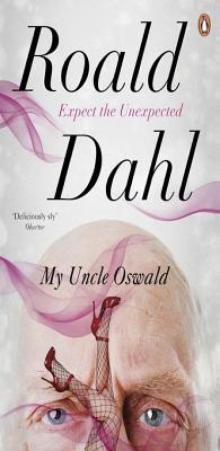 My Uncle Oswald
My Uncle Oswald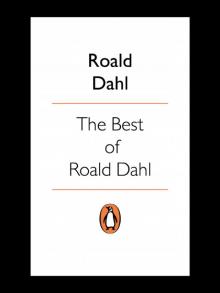 The Best of Roald Dahl
The Best of Roald Dahl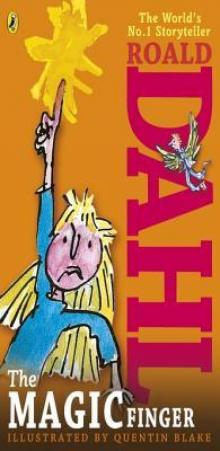 The Magic Finger
The Magic Finger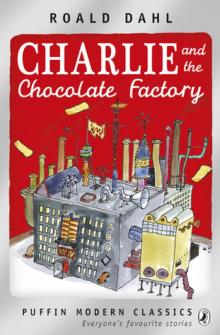 Charlie and the Chocolate Factory
Charlie and the Chocolate Factory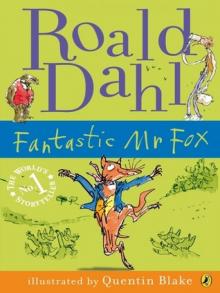 Fantastic Mr Fox
Fantastic Mr Fox Matilda
Matilda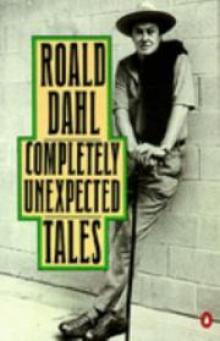 Completely Unexpected Tales: Tales of the Unexpected. More Tales of the Unexpected
Completely Unexpected Tales: Tales of the Unexpected. More Tales of the Unexpected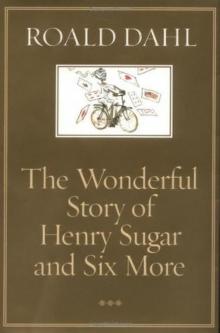 The Wonderful Story of Henry Sugar and Six More
The Wonderful Story of Henry Sugar and Six More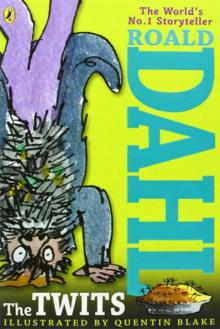 The Twits
The Twits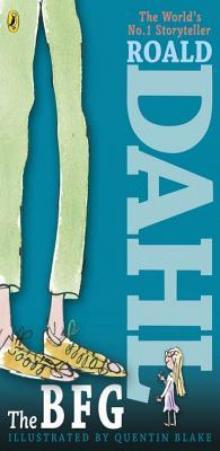 The BFG
The BFG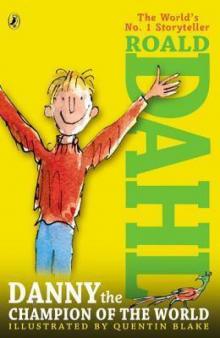 Danny the Champion of the World
Danny the Champion of the World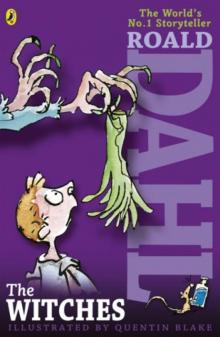 The Witches
The Witches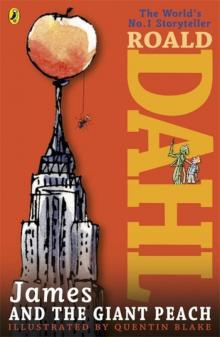 James and the Giant Peach
James and the Giant Peach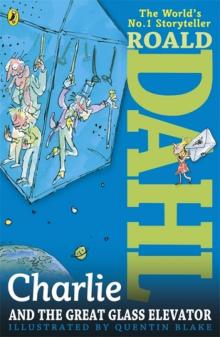 Charlie and the Great Glass Elevator
Charlie and the Great Glass Elevator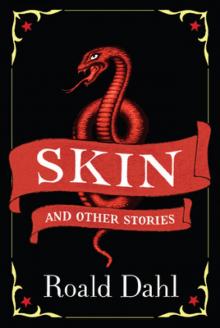 Skin and Other Stories
Skin and Other Stories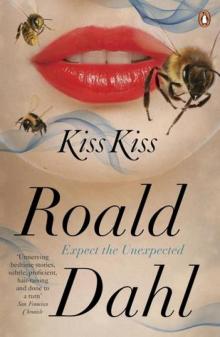 Kiss Kiss
Kiss Kiss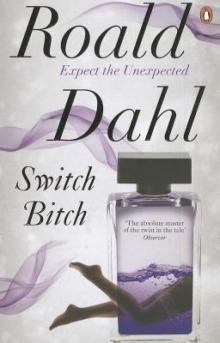 Switch Bitch
Switch Bitch The Giraffe and the Pelly and Me
The Giraffe and the Pelly and Me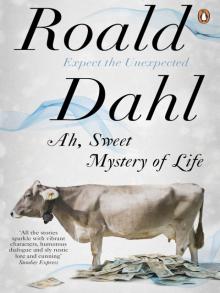 Ah, Sweet Mystery of Life
Ah, Sweet Mystery of Life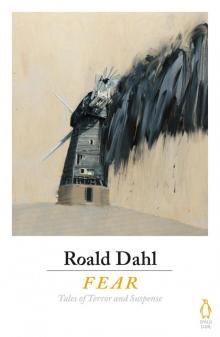 Fear
Fear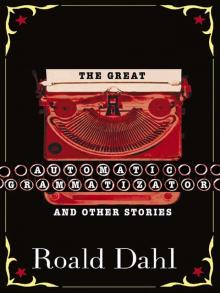 The Great Automatic Grammatizator and Other Stories
The Great Automatic Grammatizator and Other Stories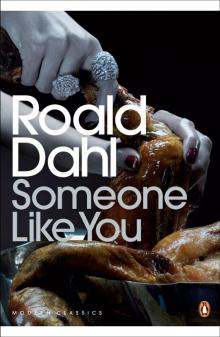 Someone Like You
Someone Like You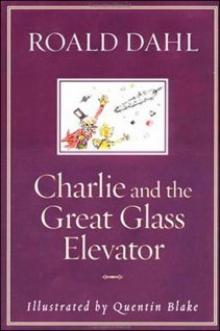 Charlie and the Great Glass Elevator c-2
Charlie and the Great Glass Elevator c-2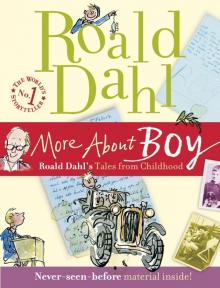 More About Boy
More About Boy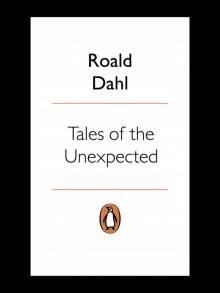 Tales of the Unexpected
Tales of the Unexpected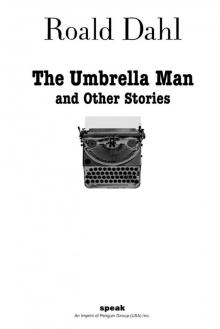 The Umbrella Man and Other Stories
The Umbrella Man and Other Stories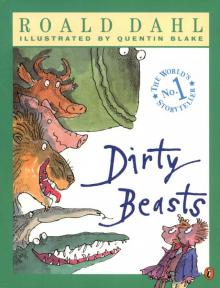 Dirty Beasts
Dirty Beasts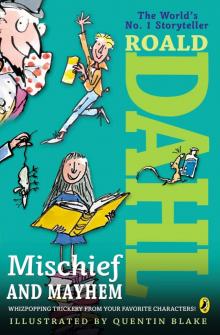 Roald Dahl's Mischief and Mayhem
Roald Dahl's Mischief and Mayhem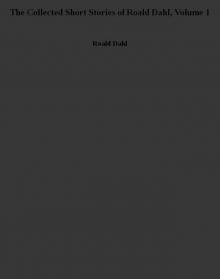 The Collected Short Stories of Roald Dahl, Volume 1
The Collected Short Stories of Roald Dahl, Volume 1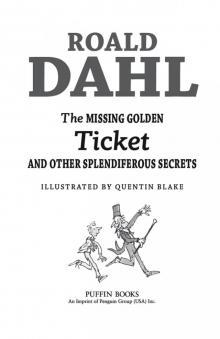 The Missing Golden Ticket and Other Splendiferous Secrets
The Missing Golden Ticket and Other Splendiferous Secrets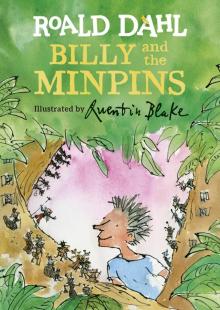 Billy and the Minpins
Billy and the Minpins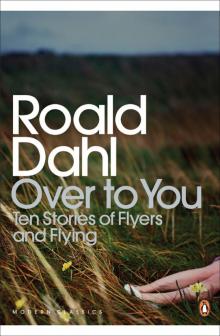 Over to You
Over to You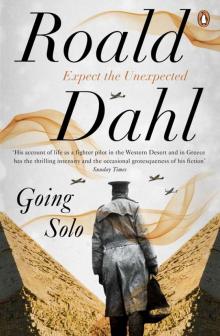 Going Solo
Going Solo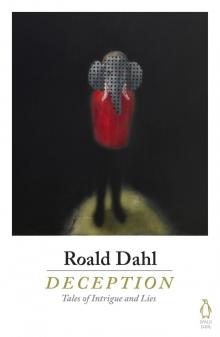 Deception
Deception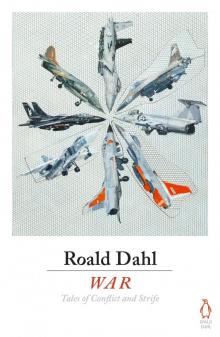 War
War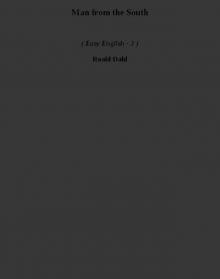 Man from the South ee-3
Man from the South ee-3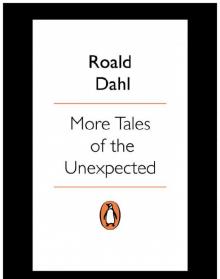 More Tales of the Unexpected
More Tales of the Unexpected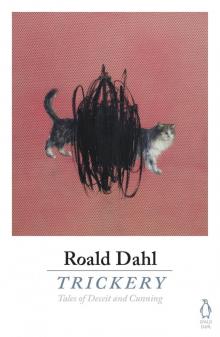 Trickery
Trickery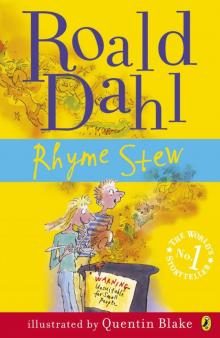 Rhyme Stew
Rhyme Stew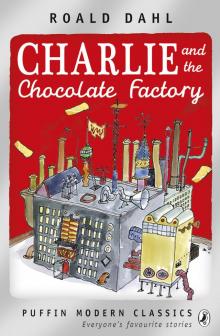 Charlie and the Chocolate Factory (Puffin Modern Classics relaunch)
Charlie and the Chocolate Factory (Puffin Modern Classics relaunch)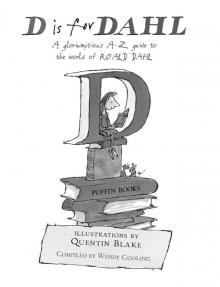 D is for Dahl
D is for Dahl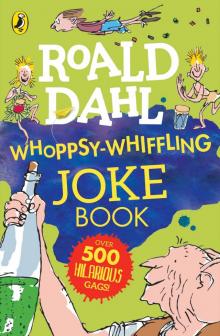 Roald Dahl Whoppsy-Whiffling Joke Book
Roald Dahl Whoppsy-Whiffling Joke Book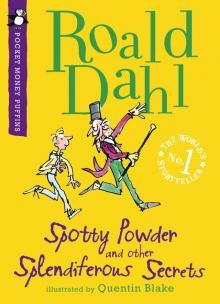 Spotty Powder and other Splendiferous Secrets
Spotty Powder and other Splendiferous Secrets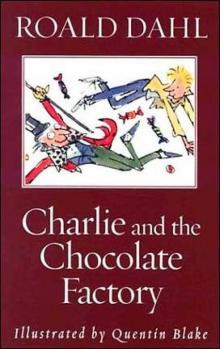 Charlie and the Chocolate Factory c-1
Charlie and the Chocolate Factory c-1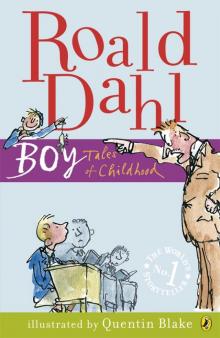 Boy
Boy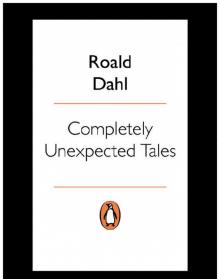 Completely Unexpected Tales
Completely Unexpected Tales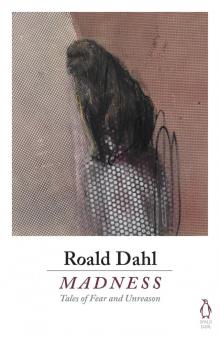 Madness
Madness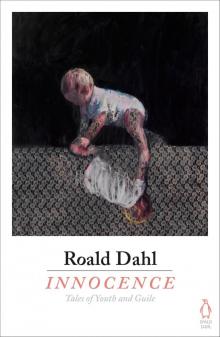 Innocence
Innocence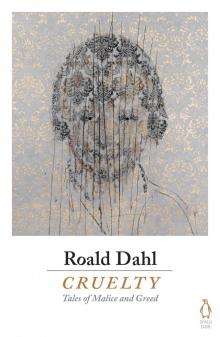 Cruelty
Cruelty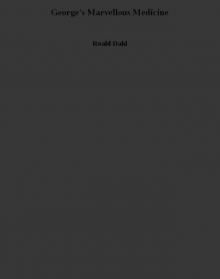 George's Marvellous Medicine
George's Marvellous Medicine